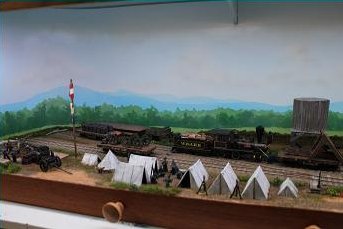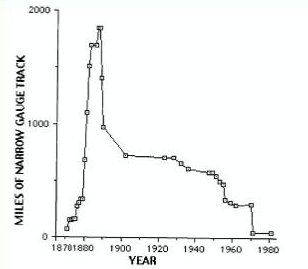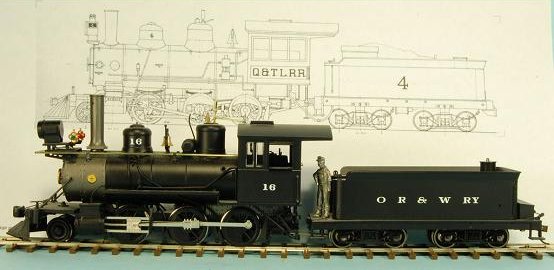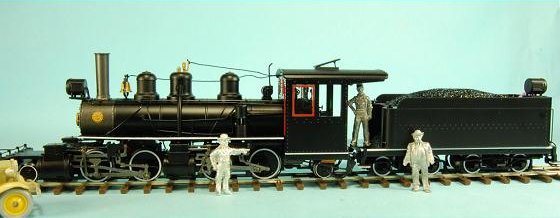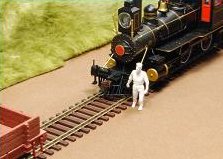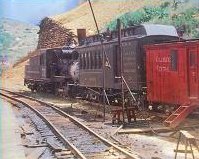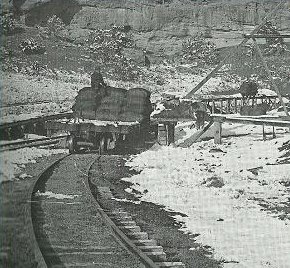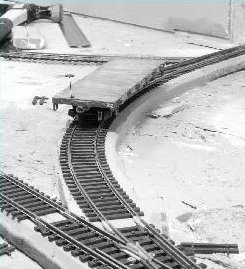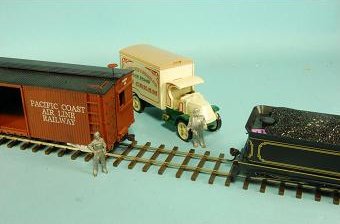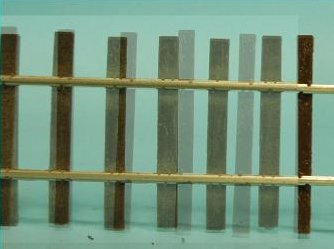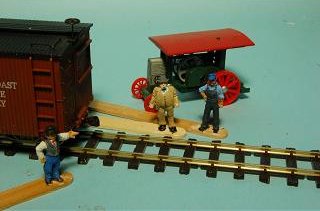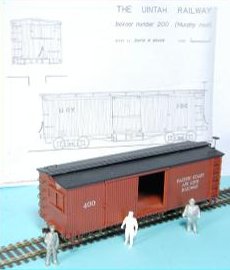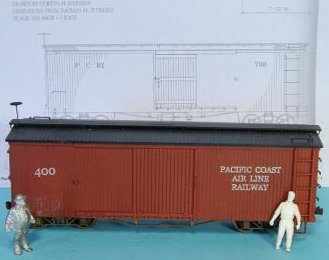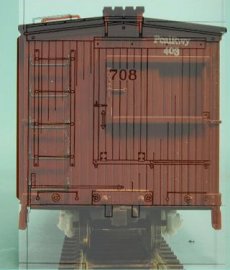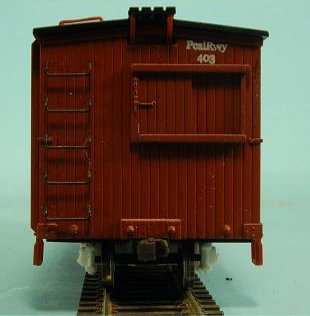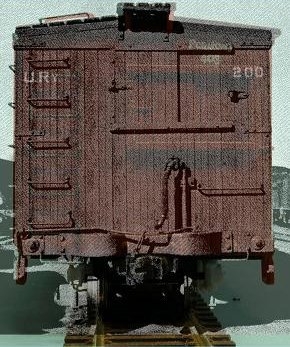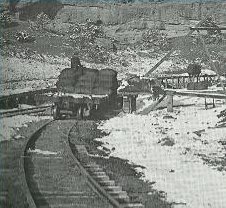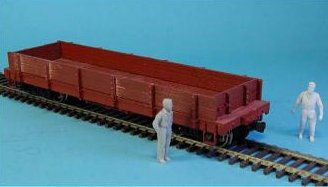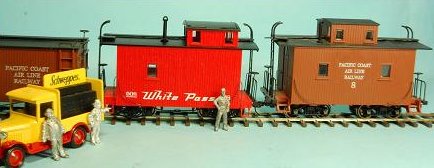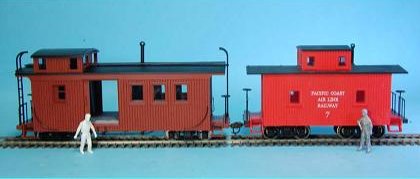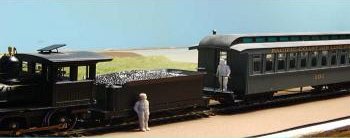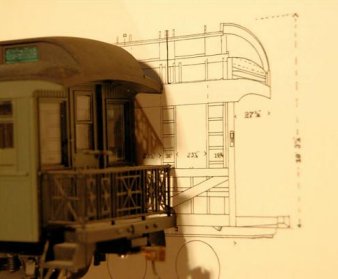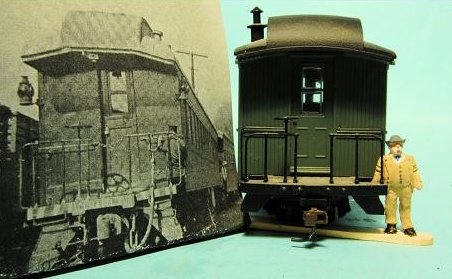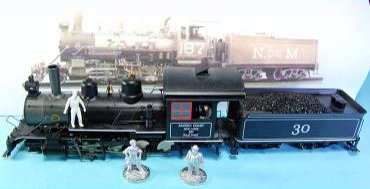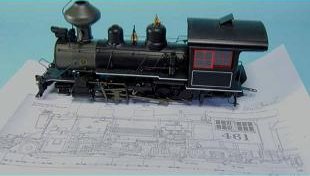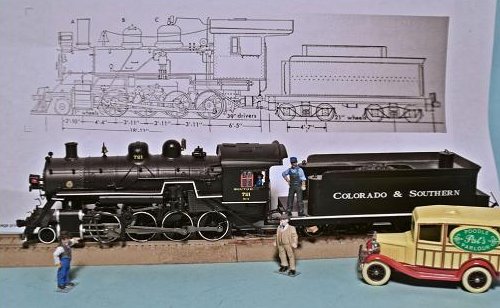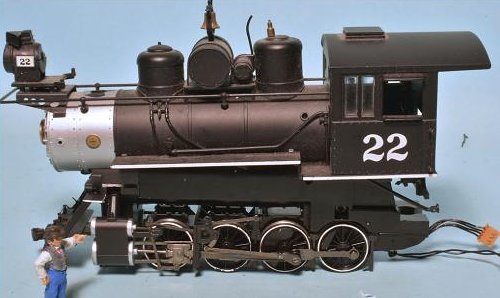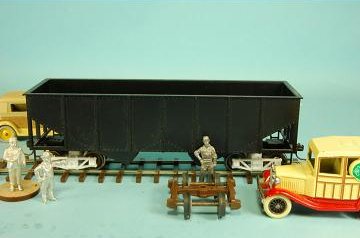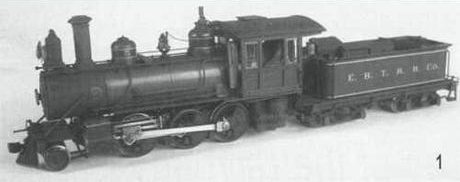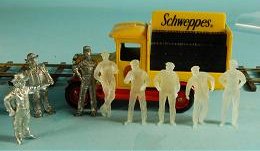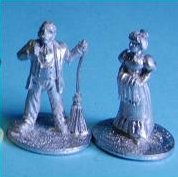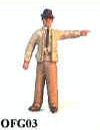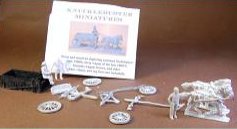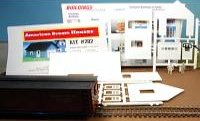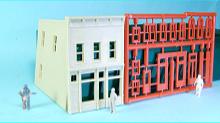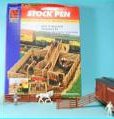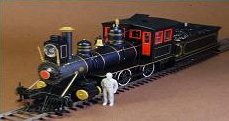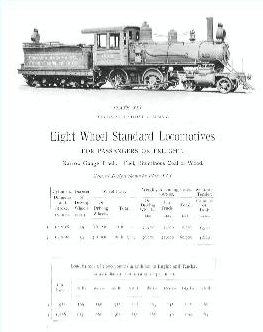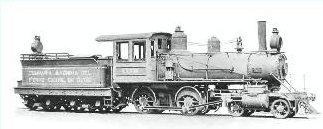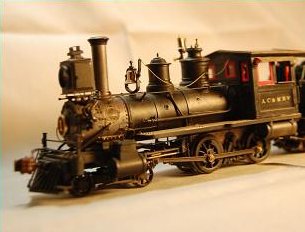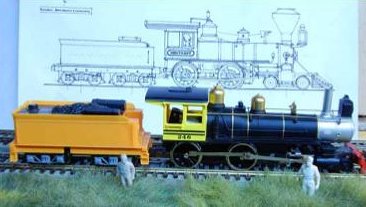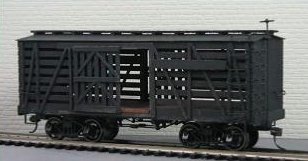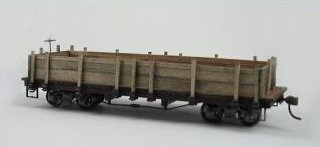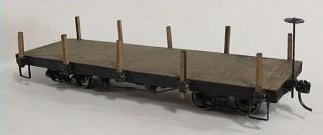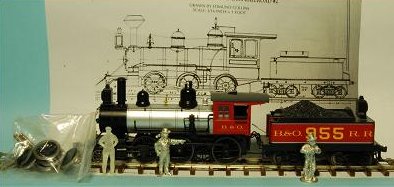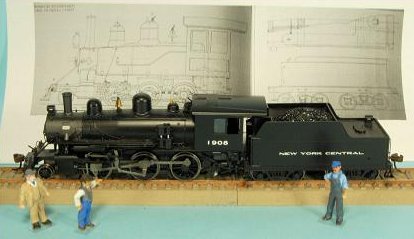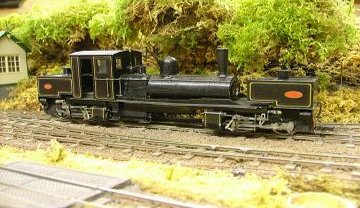Modelling 3 Foot Narrow Gauge on HO Track
Real 3 Foot Narrow Gauge for Everyone
Objects aren't "N, HO...S, O, etc. SCALE". An object is what it measures.
That is the idea behind 55n3, we are taking models from other scales and converting them to 55n3. No one makes 55n3, Bachmann makes models that can be used in 55n3 because they match plans in Scale55. That is why we have a scale rule. Measure a model, if it is the right size for Scale55 it is Scale55. The Bachmann On30 equipment is small O scale narrow gauge, but put a Scale55 ruler on the equipment and it becomes 55n3. Now it is realistic three foot equipment.
"I don't get the 'it has to be 3 foot' deal. There were plenty of 30" and 24" and other gauges as well." No, not in North America, look in any narrow gauge publication and Narrow Gauge in North America is essentially THREE foot, 'nough said.
Many of the images on these pages can be clicked on to view a larger version of the picture.
Ronald Halma's American Civil War 55n3 Layout
You can see more about this layout by visiting Ronald's Blog Spot.
You can also visit Ronald's Build Thread on Railroad Lines.
You can also view some Youtube videos of the layout in action.
Kennesaw GA 1863 video from onTraxs! 2013.
Kennesaw GA 1863 video from Modelspoordagen 2017 in Rijswijk.
Thanks Ronald, knew this was a good idea!
Common carrier United States narrow gauge railroads were THREE foot. Here is how it goes, HO track is 16.5mm. If we divide 16.5 by 3 we get 5.5mm. That scales to 1/55 for an inch, strange scale right, 1/55? Military modelling has 1/56 or 28mm figures, there are figures, wagons, vehicles in the 28mm world. Why not make the models to 5.5mm/ft?
There are two narrow gauge eras: the era of narrow gauge fever and the era of survivors after the narrow gauge crash. Historians consider narrow gauge dead after 1893 because very little new narrow gauge was built in the United States. There were pockets of survivors that lasted into the 1960's.
This graph shows the two eras of narrow gauge. The mass of extinction of "narrow gauge" began about 1885. That was the end of narrow gauge fever and standard gauging or abandonment.
The remaining narrow gauge lines existed because they were hauling coal or gravel to build the roads that eliminated the railroad.
Won't we have to scratchbuild everything? Where will we get cars and locomotives? Bachmann On30 gives us the inside frame 4-4-0 and HO locomotives can be converted to represent the narrow gauge before the crash. Bachmann's other On30 locomotives are good representatives of after the crash. Bachmann On30 freight cars convert to 55n3 easily, becoming a more typical 29' car.
This website shows articles about modelling in 5.5mm scale on HO track. Hopefully someone will follow me in this venture.
I guess it has to have a name, Scale55 sounds good, we don't want to go into that "letter jungle". Sorta like the proto guys with P:87 and P:48. 55n3 being a subset.
"We don't need no stinking letter!!! 5.5mm/ft - 1/55 - Scale 55 sounds good.
The first thing you need is a "scale rule", click here to download our Scale 55 ruler.
Bachmann Built Us A 55n3 Mogul
The Bachmann On30 Mogul mechanically matches the Quincy and Torch Lake #4.
HO Gauge IS Scale 55 Three Foot Track
Wish I had discovered 55n3 in 2008 when I tore down the PcalRway. D-oh!
6" wide x 6' 8" long with 2' cl to cl.
Sn3 offers similar track but who can afford Sn3 and it is only Colorado.
Readily available from Hattons in the UK.
Found that the track can be painted to look like narrow gauge track.
Rolling Stock
If the image is placed on a Unitah boxcar photo the cross section matches.
The Bachmann On30 gondolas and flats also match the Unitah rolling stock of the later period. The gons and flats can be narrowed a scale foot to represent a typical early era narrow gauge gondola. An hour is all that it takes to narrow a gondola or a flat car.
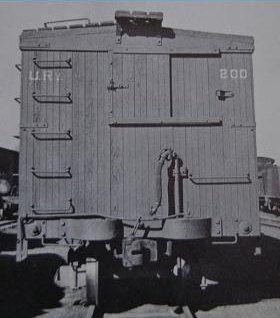
The bobber caboose needs to be lowered but the sidedoor is fine.
Nice Scale55 woody there, available on Ebay for about 5 - 10 dollars.
The new red logging caboose is lower and look better.
Not really worth the efforts to take the six inches out of the body.
The Bachmann On30 passenger cars sit about a foot too tall for a narrow gauge car.
"Modern" Narrow Gauge - Modelling Narrow Gauge Survivors
The Bachmann On30 rod locomotives can be used to model the "second generation" three foot narrow gauge equipment. After 1900 the locomotives got a lot bigger mainly geared for the export market. The only On30 Bachmann locomotive that doesn't translate to 55n3 is the "Tweetsie" ten-wheeler. It is an example of a "second generation" narrow gauge motive power. The 4-6-0 is very large. The remaining Bachmann On30 locomotives represent very small thirty inch gauge prototypes. This translates very well to 55n3.
The Mogul moves to 55n3 even though it is a three foot prototype. It is a small early three foot locomotive that is similar to Baldwin's later catalog locomotives. The Mogul can be used without modification.
The Bachmann On30 freight cars are very small early 3 foot prototypes. They scale better as 1/55 cars of the "modern" era than 1/48. The ladders and grabs are the right size and placement also.
Click this link to go to the section on converting Bachmann 0n30 locomotives to 55n3.
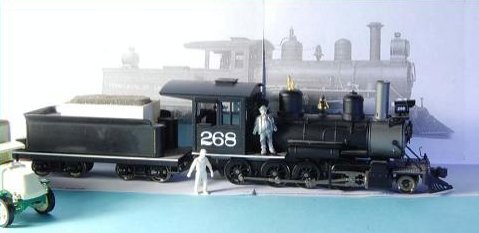
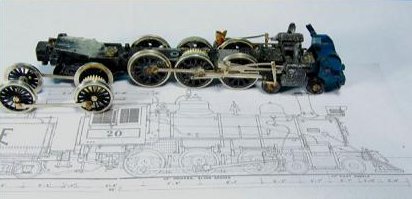
Bachmann HO 2-8-0 to 55n3
American Models S Scale Hoppers
The Myner trucks fit just right.
Motor Vehicles
Click this link to go to the section on Motor Vehicles.
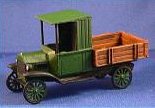

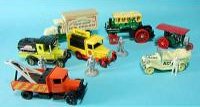
People
Horse Drawn Vehicles
Structures
Modelling the Fever
Narrow Gauge fever swept America during the 1870's until it's precipitous crash 20 years later. There is no other scale that provides equipment to model early narrow gauge. On30 won't do it, On3 won't do it, Sn3 won't do it. This is a great idea to do it, believe me. Common carrier narrow gauge railroads in the United States were THREE FOOT gauge.
Early North American Narrow Gauge can be modelled because HO loco mechanisms, trucks and track convert easily to the early period.
Click this link to go to the section on the Bachmann 4-4-0.
The On30 Bachmann inside frame 4-4-0 is really too small to be a 1/48 scale locomotive. In 1/55 it is great representing a late 1880's loco. The other Bachmann On30 locomotives are suitable for the post narrow gauge crash era 55n3.
Early three foot locomotives can be made from HO locomotives. The Mantua HO ten-wheeler is a good starting point for a 5.5mm/foot three foot gauge loco.
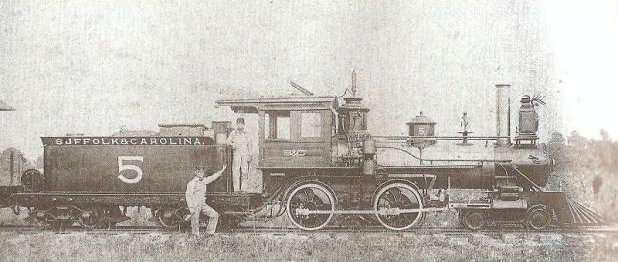
Click here to go to the Rail-line Forum article.
HO Locomotives as Early 55n3
Click here to go to the section on Locomotive Resources.
Click here to go to ON30IMA.
Modelling 1870's Pioneer Narrow Gauge
Scale55 is the only scale that early three foot narrow gauge works easily. Being HO gauge the use of HO mechanisms and locomotives come into play.
Click here to go to the section on Pioneer Narrow Gauge.
Modelling Small Loggers and Others
Others have been here
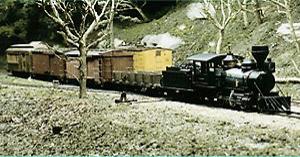
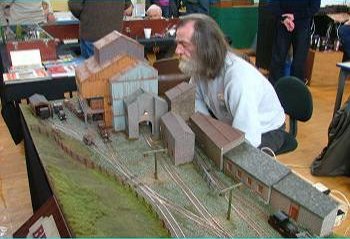

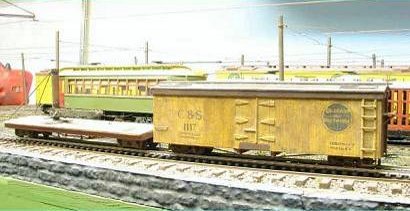
Two foot in 5.5mm Scale
Here is Malcom Savage's model of Tasmania's North-East Dundas Tramway locomotive K1 - the first Beyer-Garratt.
Forums and Associations Discussing 5.5mm/ft


What does only 10-15% scale difference mean?
Why 55n3?
When I first presented this idea in 2010 it was greeted with undue criticism. Now we are back.
Amazed at how much of the equipment talked about on the website is now unavailable, the hobby has become a world of RTR diesels.
Hope you join me in this endeavor.
Why Narrow Gauge? Click here and read about why there was narrow gauge in America in an 1876 treatise from Google Books. You can download this as a PDF.


